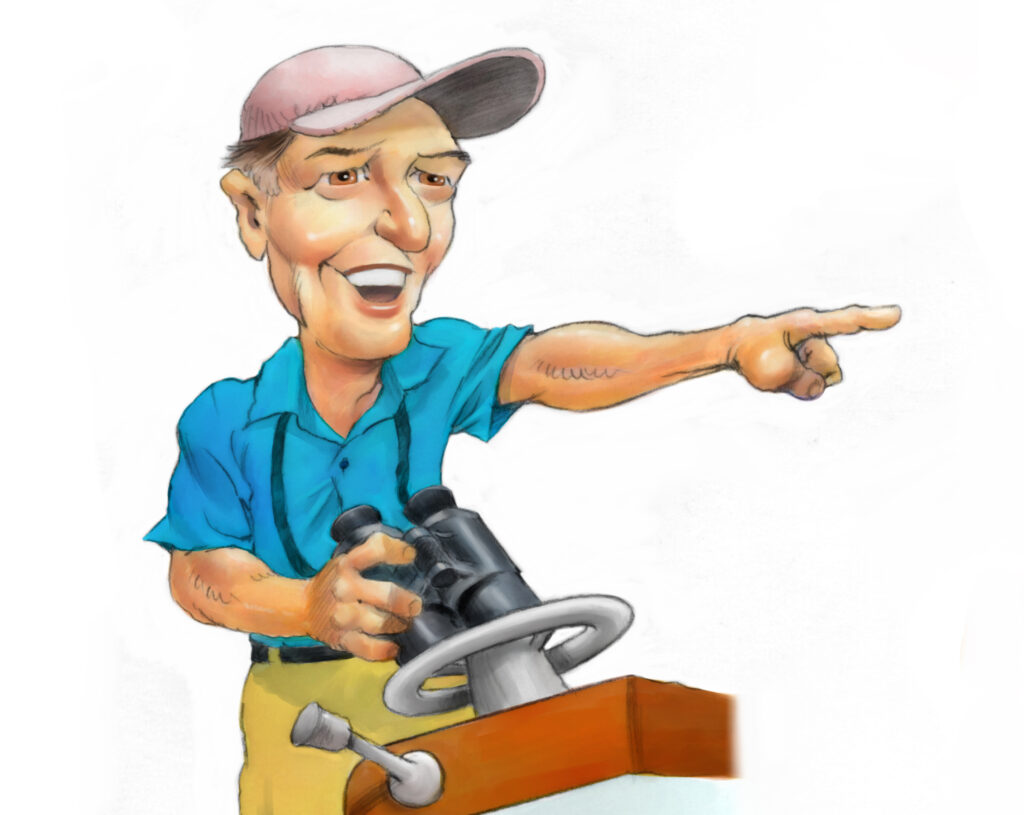From Rough Seas to Smooth Sailing: The Evolution of Gyro Stabilizers
Imagine a day at sea transformed from a tumultuous ordeal to a smooth adventure. This was a dream for many, including myself during my college days, when I captained a 42-foot Downeaster to fund my studies. I vividly recall a particularly rough trip with regular clients, where the relentless rocking of the boat turned excitement into seasickness for all on board. It was a day that a gyro stabilization system would have drastically improved. Fast forward to today, and this once exclusive technology, previously reserved for large sportfish boats and luxury yachts, is now a game-changer for boats as small as 22 feet. Let’s dive into the world of gyro stabilizers, a remarkable innovation that has gone mainstream, changing the way we experience the ocean’s unpredictable nature.
Table of Contents
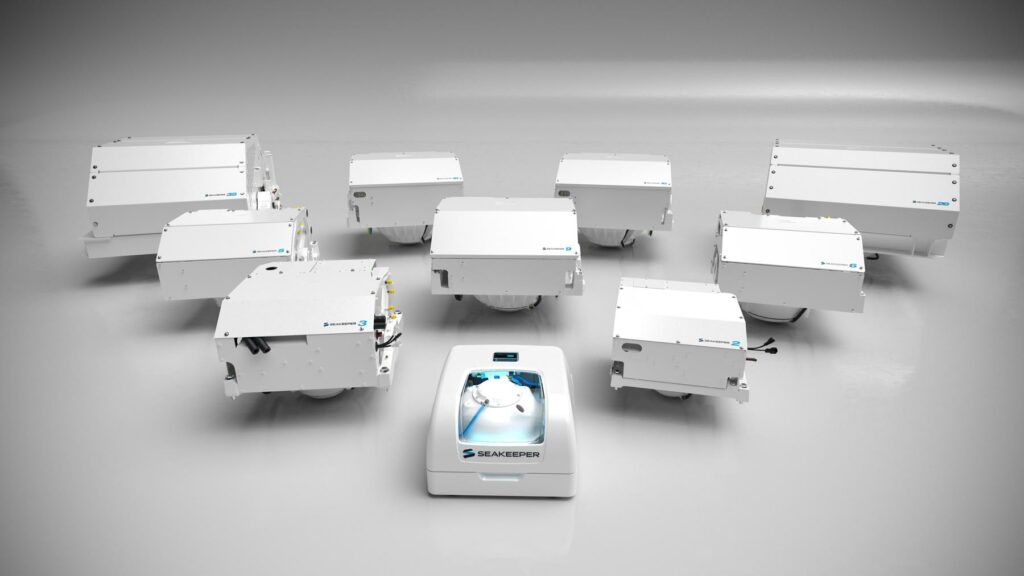
Understanding the Mechanics: How Gyro Stabilizers Work
Many of you, as I did, most likely had a toy gyroscope when we were much younger. I got proficient, after endless attempts, at finally making mine spin and balance on the tip of a pen and gazed, in rapt fascination, as it went to a 45-degree angle when I slowly moved the point around, watching it seemingly defying gravity. Without knowing it, I had been observing precession, a complex concept of physics and a major reason why gyroscopes do what they do. So, let’s skip all the math formulas and terms such as the conservation of angular momentum, the relation between torque and the moment of inertia, and other topics capable of producing a glassy-eyed and sleep-inducing, coma-like experience that will quickly overcome a reader, and now attempt to water it all down in a satisfactory and easily understood form.
Basically, with the rotor spinning on its spin axis and attached to the frame by a gimbal, and because of the forces created by this motion, if the gyroscope is moved, it will try to compensate/push back, or precess, against the motion and return to its original orientation. The lightbulb just went off, didn’t it?
Now, take that idea and put it on steroids via an electrically operated motor, DC or AC depending on the system and your vessel’s size and needs. Give it the ability to spin a rotor at a constant and advanced speed of perhaps some 550+/- mph, and engineer and encapsulate it for the marine environment so it can be installed on a boat. And that is just what several top manufacturers of gyro stabilizers did.
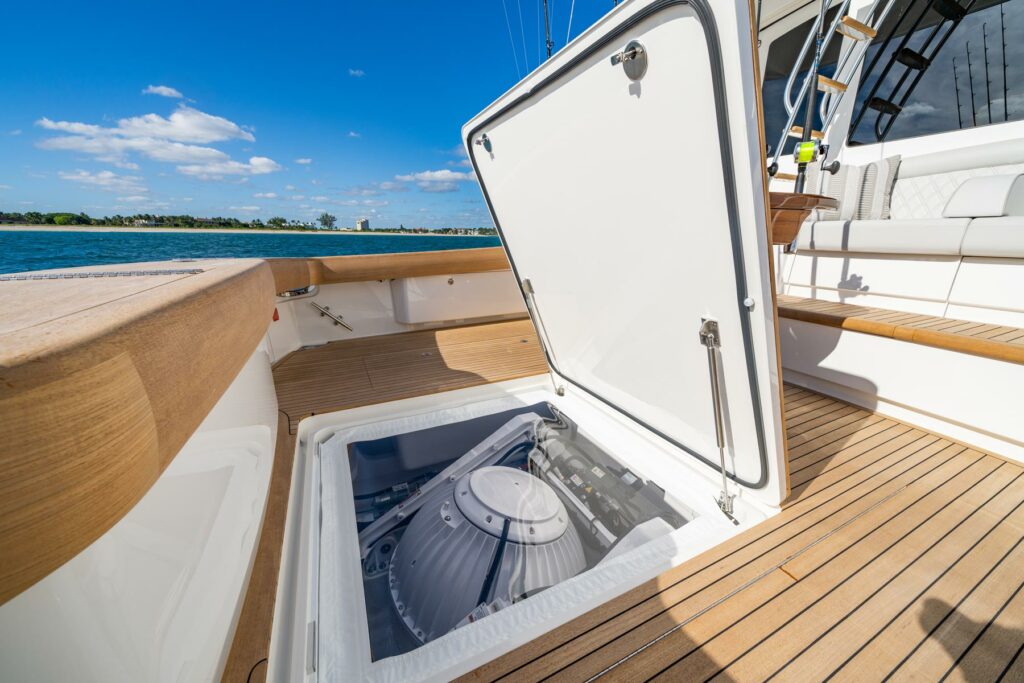
Leading the Way: Key Players in Gyro Stabilization
It is widely accepted that while engaging in conversations regarding these systems, the Seakeeper name has product recognition. But along with Mitsubishi’s Tohmei ARG, VEEM and Quick USA, these quality companies all present machines that can smooth things out for you and your boat while at sea.
Since bursting on the scene in 2006, when a prototype was installed on a 43’ Viking, there are now 10 models available covering a wide variety of applications, from the Seakeeper 1 for boats as small as 23-feet to the Seakeeper 35, for vessels over 85 feet in length.
Advanced Design and Installation: Making it Work for Your Vessel
The design and engineering of the Seakeeper units includes its inner workings, that being flywheel, bearings and motor, all housed in a vacuum-sealed, gimbaled sphere, which according to the company, allows it to spin without resistance to air and equates to a reduction in power needs, weight and physical size.
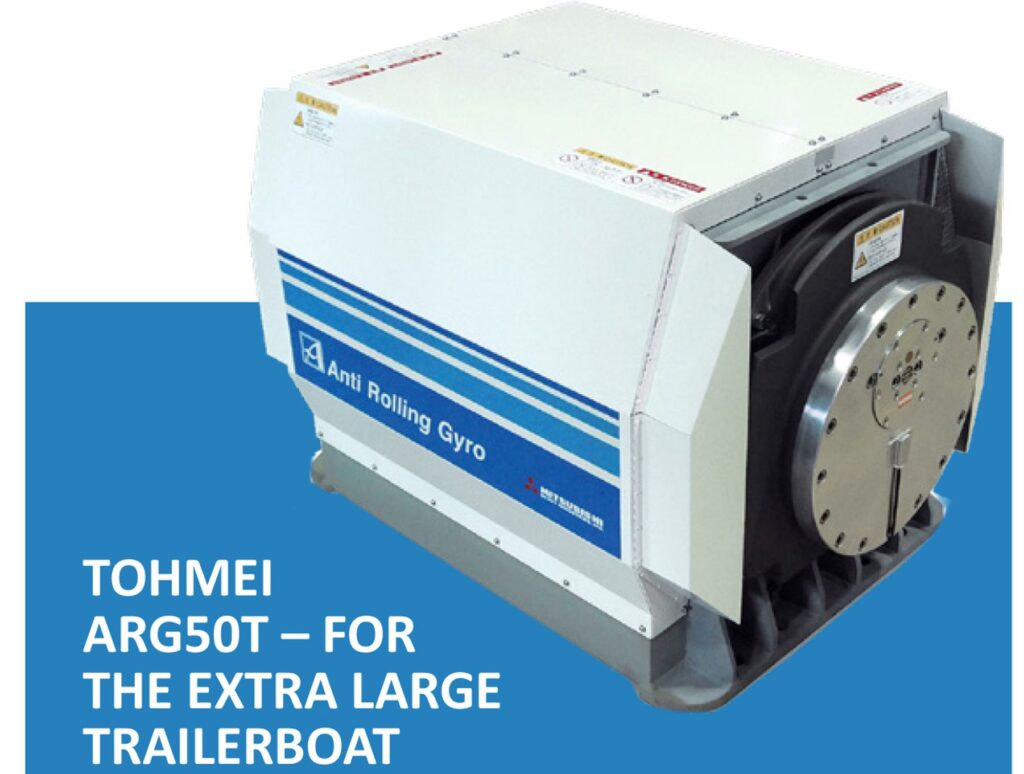
Overcoming Challenges: Cooling Systems and Mounting Solutions
Sounds like a design offering a done deal. But wait, there’s more, there always is. Inherent with these systems and the speed and friction they generate, you must cool them down lest the heat created while in operation causes damage, and soon, system failure.
To keep things running at acceptable temps in its units, Mitsubishi’s Tohmei ARG, for Anti-Rolling Gyro and Quick USA all use an air-cooled system as opposed to Seakeeper’s patented hydraulic water-cooling set-up requiring a thru-hull fitting. While there are pros and cons on each side, and every manufacturer will have their own spin—pun very intended— on this topic, the fact remains that the heat generated must be properly dispelled.
Given its vacuum-sealed design, Seakeeper water-cools their flywheels and the units can be mounted anywhere a thru-hull fitting can be accessed while the air-cooled offerings operate best in a more well-ventilated area.
Customization and Considerations: Choosing the Right Gyro Stabilizer
Either way, and due to the weight involved with these systems, proper support must be attended to. And on the topic of mounting, they do not have to be positioned on the vessel’s centerline. On larger sportfish boats, the pump or engine room, lazarette or under a mezzanine, for example will suffice while on smaller boats, in the console, behind the leaning post or other creative space will do. All can be refitted but remember, as with any project which includes a system with this kind of heft, stringer-mounted or other place to make it integral to your boat as well as weightcompensation for proper balance and running attitude will be necessary. Always include your original boat builder in any discussions regarding retrofit. All these companies have a superb dealer and installer network to handle individual needs.

The Tohmei Group’s ARG is a direct result of its experience with aerospace manufacturing such as space station replenishment. As with all these manufacturers, the company stands on its reputation for providing the owners of its systems with a robust, heavyduty build capable of withstanding the rigors of the marine environment. The product line up runs from the ARG50T and ARG65T for vessels under 10 tons up to the ARG375T for 60 tons or less. All the company’s offerings will minimize trolling and zero speed roll and its rotary damper technology is, according to the company, quite sensitive in very low wave height conditions.
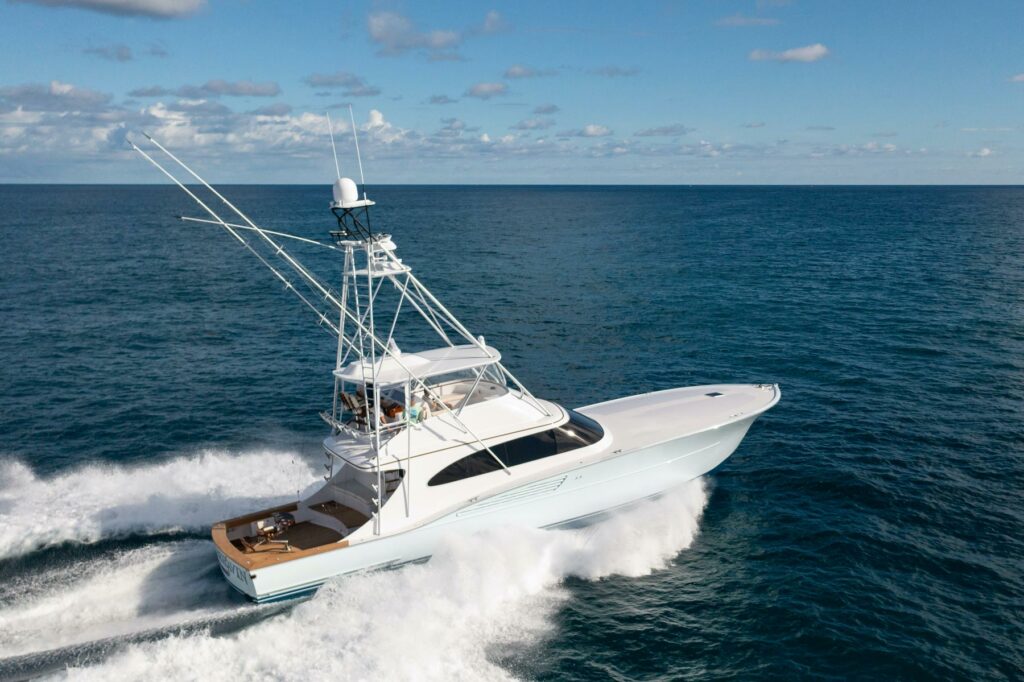
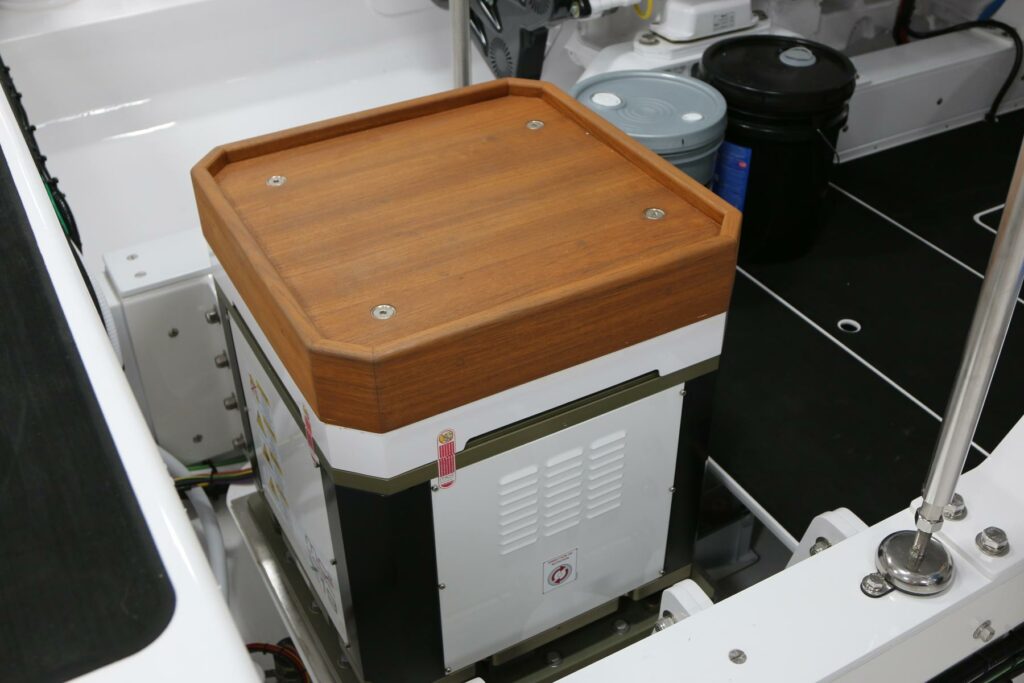
PM Marina, an Italian-based company founded in 1982, specializing in marine electronics and electrical systems among other items, acquired Quick some 10 years later, and by 2006, Quick USA was set up with headquarters in Linthicum, Maryland. Its product line of 17 gyro stabilizers, from the DC series to the AC series, can cover boats up to 250 tons. Its offerings, relative to sizeand need, are designed for compactness and ease of installation. The Quick USA line is air-cooled and does not require any special needs for retro-fitting except for, as with any install of this type, to be placed in an area with proper support.
It is widely accepted that while engaging in conversations regarding these systems, the Seakeeper name has product recognition. But along with Mitsubishi’s Tohmei ARG, VEEM and Quick USA, these quality companies all present machines that can smooth things out for you and your boat while at sea.
Looking Ahead: Future Innovations in Gyro Stabilization
Rounding out this discussion are the gyro stabilizers from VEEM. This industry-leading company has been in the forefront of shaft lines, props and gyro stabilizing units since 1968. Its gyro systems are typically found on larger vessels, with its VG52SD suitable with 65-footers on up to the VG520SD for those from 130 feet to 250 feet-plus. This latter model is the largest gyrostabilizer available to date. However, the VG750SD is coming soon with the ability for installation on vessels from 165 feet up to 300 feet or more. All VEEM’s systems are water-cooled, run quiet, offer a robust design and high-flow lubrication system for prolonged bearing life, are fully serviceable onboard without the need for removal and offer an Eco-Mode for power-saving while remaining ready for service. According to the company, its systems can reduce roll up to 95 percent in rough sea conditions.
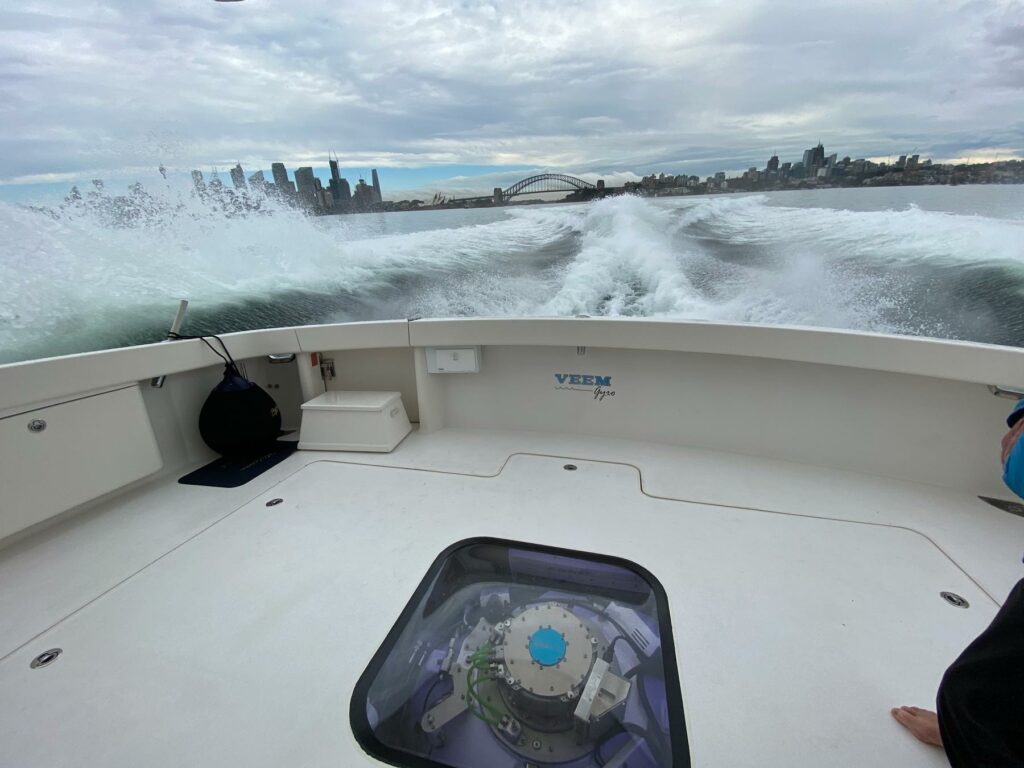
In closing, there are many considerations to think about when opting to put one of these systems aboard your vessel. All have relatively low maintenance regimens and a detailed schedule of upkeep is supplied by each manufacturer. As they are rather pricey, you should do your due diligence when planning your budget. Of course, on new builds, your gyro stabilizer, with its weight accurately accounted for—remember, they are heavy, even the smaller ones—will be counterweighted correctly as per your builder’s calculations. And again, with retrofitting, as you cannot just plop one of these things aboard. Bring your builder into any conversation regarding adding a gyro stabilization system.
Another aspect to consider will be the power requirements for whatever model is deemed appropriate for your needs. This will be factored in by the manufacturer, along with other considerations, as to the size, weight and configuration of your boat.
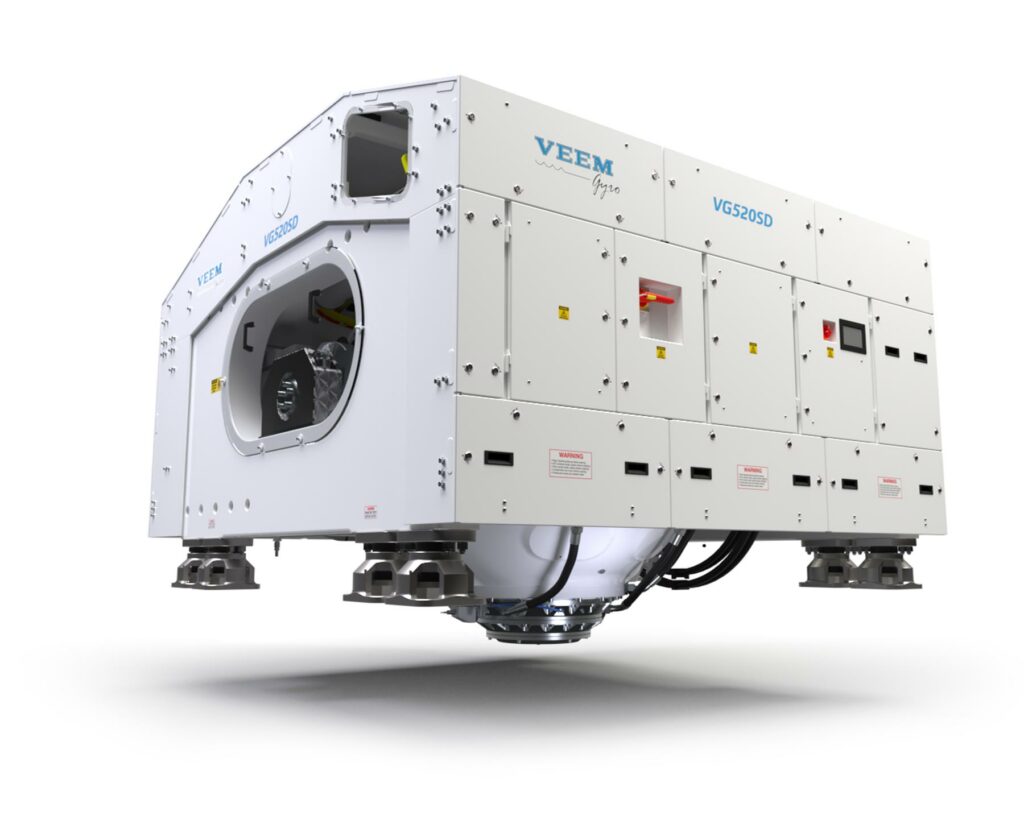
Gyroscopic power is measured in Newtonmeters (N-M) and again, avoiding all the math and rather difficult formulas, it is most easily understood in its comparison to horsepower. The higher the N-M, the more power the unit will need. For example, a 1,000 N-M model will not need as much as an 18,000 N-M system. In fact, having a separate 12V DC house battery will be sufficient for the lower output gyros and with the larger units, AC power is needed. With the really big ones, a large Kw generator is the only way to go. As they do not ‘spool up’ to operational status immediately with the flip of a switch, you will need to allow them to reach the proper level as per their size. Smaller systems take a shorter time while larger units will take much longer. Your sales rep will supply you with all the details. Since power draw is important, and with the depth of experience these manufacturers have, they, along with their dealer/installers will make sure you choose the right unit for your needs.
Having a gyro stabilizing system aboard your boat, whether it’s an offshore-running center console or a major ocean-prowling sportfish, will make things a bit steadier when dealing with anything other than bathtub-calm water. Your family, friends and guests, and all those who suffer under the pitiless grip of terminal mal-de-mer, will thank you.
Don’t Forget to Check Out Our Sportfishing Job Board! Did You Know? It’s the perfect platform for seeking skilled captains and mates. Whether you’re on the hunt for your dream team or looking to join one, your next big adventure begins here. Explore the opportunities now! Click Here







